PUM1 Promotes Tumor Progression by Activating DEPTOR-Meditated Glycolysis in Gastric Cancer
- PMID: 37469018
- PMCID: PMC10520643
- DOI: 10.1002/advs.202301190
PUM1 Promotes Tumor Progression by Activating DEPTOR-Meditated Glycolysis in Gastric Cancer
Abstract
RNA-binding proteins (RBPs) play essential roles in tumorigenesis and progression, but their functions in gastric cancer (GC) remain largely elusive. Here, it is reported that Pumilio 1 (PUM1), an RBP, induces metabolic reprogramming through post-transcriptional regulation of DEP domain-containing mammalian target of rapamycin (mTOR)-interacting protein (DEPTOR) in GC. In clinical samples, elevated expression of PUM1 is associated with recurrence, metastasis, and poor survival. In vitro and in vivo experiments demonstrate that knockdown of PUM1 inhibits the proliferation and metastasis of GC cells. In addition, RNA-sequencing and bioinformatics analyses show that PUM1 is enriched in the glycolysis gene signature. Metabolomics studies confirm that PUM1 deficiency suppresses glycolytic metabolism. Mechanistically, PUM1 binds directly to DEPTOR mRNA pumilio response element to maintain the stability of the transcript and prevent DEPTOR degradation through post-transcriptional pathway. PUM1-mediated DEPTOR upregulation inhibits mTORC1 and alleviates the inhibitory feedback signal transmitted from mTORC1 to PI3K under normal conditions, thus activating the PI3K-Akt signal and glycolysis continuously. Collectively, these results reveal the critical epigenetic role of PUM1 in modulating DEPTOR-dependent GC progression. These conclusions support further clinical investigation of PUM1 inhibitors as a metabolic-targeting treatment strategy for GC.
Keywords: DEPTOR; PI3K-Akt pathway; PUM1; gastric cancer; glycolysis.
© 2023 The Authors. Advanced Science published by Wiley-VCH GmbH.
Conflict of interest statement
The authors declare no conflict of interest. All these study sponsors have no roles in the study design, in the collection, analysis and interpretation of data.
Figures

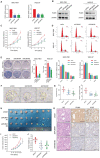
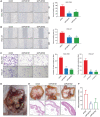
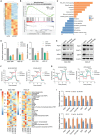
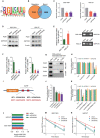

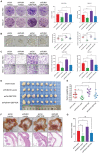

Similar articles
-
Pumilio1 regulates NPM3/NPM1 axis to promote PD-L1-mediated immune escape in gastric cancer.Cancer Lett. 2024 Jan 28;581:216498. doi: 10.1016/j.canlet.2023.216498. Epub 2023 Nov 28. Cancer Lett. 2024. PMID: 38029539
-
DEP domain-containing mTOR-interacting protein suppresses lipogenesis and ameliorates hepatic steatosis and acute-on-chronic liver injury in alcoholic liver disease.Hepatology. 2018 Aug;68(2):496-514. doi: 10.1002/hep.29849. Epub 2018 May 21. Hepatology. 2018. PMID: 29457836 Free PMC article.
-
Bipartite binding and partial inhibition links DEPTOR and mTOR in a mutually antagonistic embrace.Elife. 2021 Sep 14;10:e68799. doi: 10.7554/eLife.68799. Elife. 2021. PMID: 34519269 Free PMC article.
-
DEPTOR at the Nexus of Cancer, Metabolism, and Immunity.Physiol Rev. 2018 Jul 1;98(3):1765-1803. doi: 10.1152/physrev.00064.2017. Physiol Rev. 2018. PMID: 29897294 Free PMC article. Review.
-
Research progress on the regulation mechanism of DEPTOR expression and its role in tumorigenesis.Neoplasma. 2025 Apr;72(1-2):1-15. doi: 10.4149/neo_2025_241203N504. Epub 2025 Mar 28. Neoplasma. 2025. PMID: 40162510 Review.
Cited by
-
Digestive cancers: mechanisms, therapeutics and management.Signal Transduct Target Ther. 2025 Jan 15;10(1):24. doi: 10.1038/s41392-024-02097-4. Signal Transduct Target Ther. 2025. PMID: 39809756 Free PMC article. Review.
-
RBM8A promotes gastric cancer progression by binding with UPF3B to induce BBC3 mRNA degradation.Int J Mol Med. 2025 Sep;56(3):131. doi: 10.3892/ijmm.2025.5572. Epub 2025 Jul 4. Int J Mol Med. 2025. PMID: 40613240 Free PMC article.
-
Identifying the crucial oncogenic mechanisms of DDX56 based on a machine learning-based integration model of RNA-binding proteins.NPJ Precis Oncol. 2025 Jul 17;9(1):240. doi: 10.1038/s41698-025-01039-9. NPJ Precis Oncol. 2025. PMID: 40670701 Free PMC article.
-
Hepatocyte-derived Pumilio1-enriched exosomes inhibit HSC activation by suppressing tropomyosin-4 translation.Hepatol Commun. 2025 Jul 21;9(8):e0759. doi: 10.1097/HC9.0000000000000759. eCollection 2025 Aug 1. Hepatol Commun. 2025. PMID: 40689527 Free PMC article.
-
Analysis of metabolic characteristics of metabolic syndrome in elderly patients with gastric cancer by non-targeted metabolomics.World J Gastrointest Oncol. 2024 Jun 15;16(6):2419-2428. doi: 10.4251/wjgo.v16.i6.2419. World J Gastrointest Oncol. 2024. PMID: 38994147 Free PMC article.
References
-
- Sung H., Ferlay J., Siegel R. L., Laversanne M., Soerjomataram I., Jemal A., Bray F., CA Cancer J. Clin. 2021, 71, 209. - PubMed
-
- Songun I., Putter H., Kranenbarg E. M., Sasako M., van de Velde C. J., Lancet Oncol. 2010, 11, 439. - PubMed
-
- Wilke H., Muro K., Van Cutsem E., Oh S. C., Bodoky G., Shimada Y., Hironaka S., Sugimoto N., Lipatov O., Kim T. Y., Cunningham D., Rougier P., Komatsu Y., Ajani J., Emig M., Carlesi R., Ferry D., Chandrawansa K., Schwartz J. D., Ohtsu A., Group R. S., Lancet Oncol. 2014, 15, 1224. - PubMed
-
- Janjigian Y. Y., Shitara K., Moehler M., Garrido M., Salman P., Shen L., Wyrwicz L., Yamaguchi K., Skoczylas T., Campos Bragagnoli A., Liu T., Schenker M., Yanez P., Tehfe M., Kowalyszyn R., Karamouzis M. V., Bruges R., Zander T., Pazo‐Cid R., Hitre E., Feeney K., Cleary J. M., Poulart V., Cullen D., Lei M., Xiao H., Kondo K., Li M., Ajani J. A., Lancet 2021, 398, 27. - PMC - PubMed
Publication types
MeSH terms
Substances
Grants and funding
- 82003104/National Natural Science Foundation of China
- 82073148/National Natural Science Foundation of China
- 81772579/National Natural Science Foundation of China
- 2021B1212040006/Guangdong Provincial Key Laboratory of Digestive Cancer Research
- 2019A1515110632/Guangdong Basic and Applied Basic Research Foundation
LinkOut - more resources
Full Text Sources
Medical
Molecular Biology Databases
Miscellaneous
